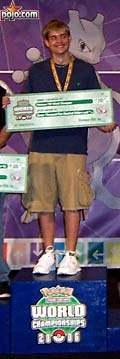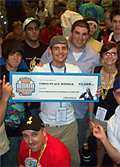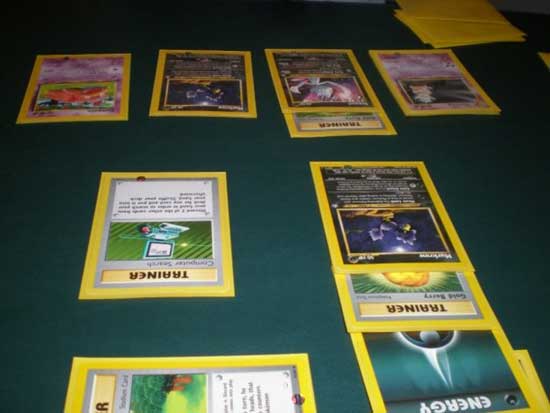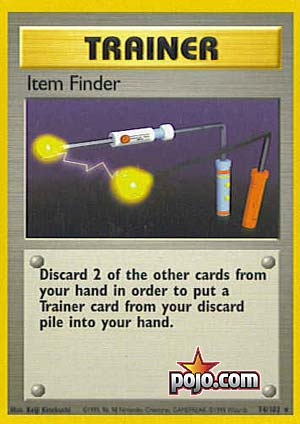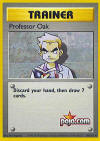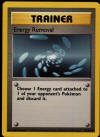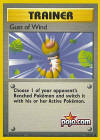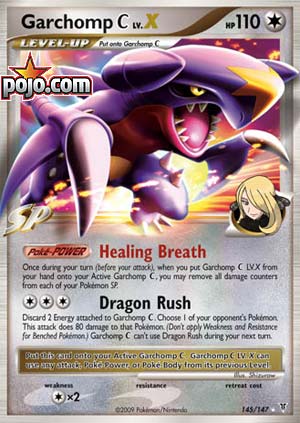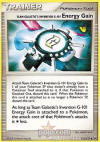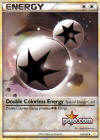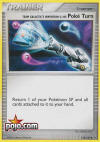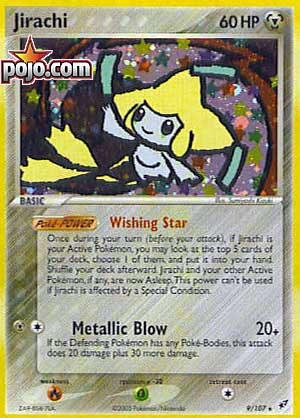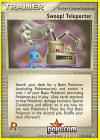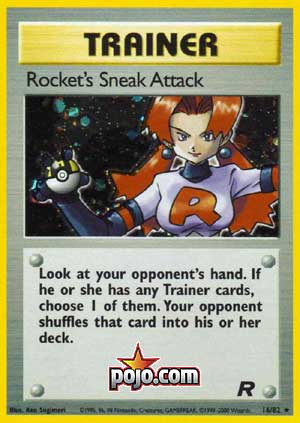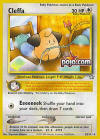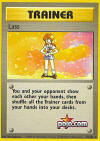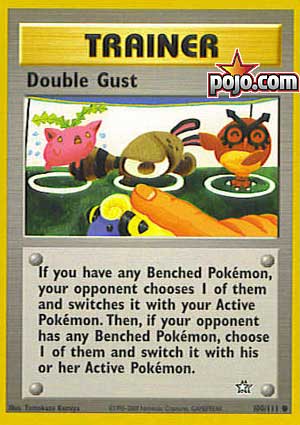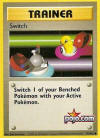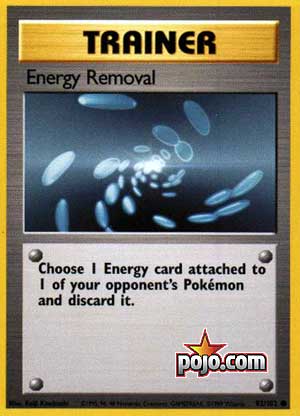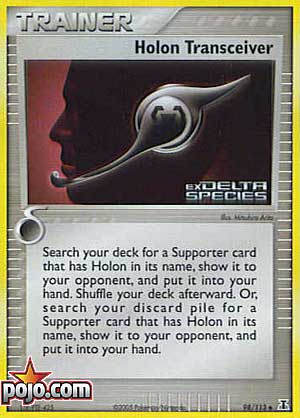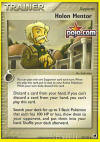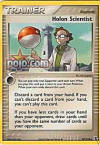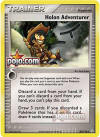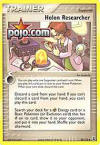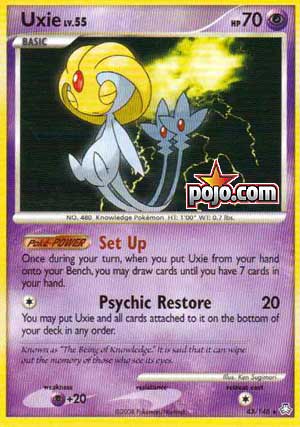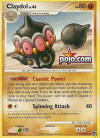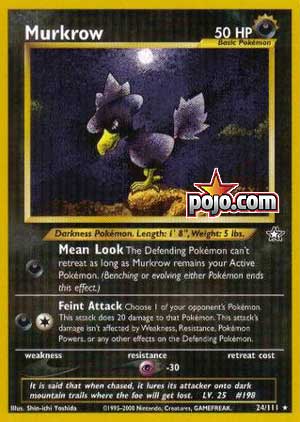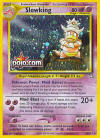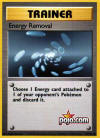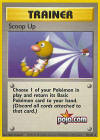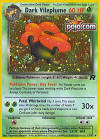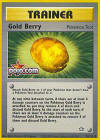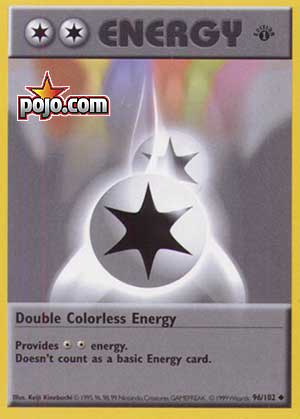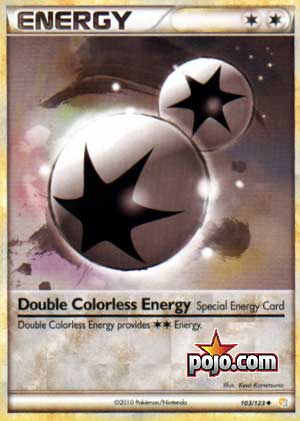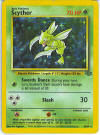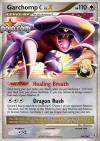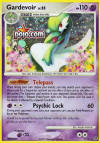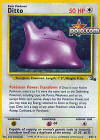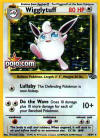|
|
|||||
| Pojo's Pokemon news, tips, strategies and more! | |||||
|
|
|||||
 |
|||||
|
|
|||||
|
Pokemon Home
Magic
|
Ness's Nest
The Top 50 Pokémon Cards
Below I've ranked what I believe are the Top 50 Pokemon
cards of all time. Now, you're probably wondering, how did I
determine which cards were better than others? Well, for
each card, I considered three different things:
#1 The Strength of the card
Self-explanatory. How good was the card? Did it win games?
Was it easy to counter?
Over the card's lifespan, how long was this card good? Some
cards were legal for more years than others, so I don't
consider a card that was good all four years it was legal
much better than a card that was equally good for the two
years it was legal. Instead, I try to look at it by
averaging its strength over its lifespan, but weighed
slightly in favor of ranking the card in its prime.
#3 Versatility of the card
Cards that can be played in more decks are better cards.
That's why you'll see a lot of trainers at the top of this
list: these cards weren't just good, but they were used to
win games in a variety of decks. You'll also see Pokemon
that are used for Poke-Powers higher than a lot of Pokemon
that require a specific type of energy.
Another way to interpret versatility was if a card was
playable in both Standard and Modified. I gave a small bonus
to cards that were good in both formats.
Not familiar with Standard and Modified?
Standard is the first tournament format used in the Pokemon
TCG. It allowed players to use all Pokemon cards. While it
technically still exists today (called "unlimited"), the
last legitimate tournament for it was held in 2002, so
anything from the first three sets (Base, Jungle & Fossil)
rotated out in 2002, as far as me, common sense and this
article are concerned.
The second format, called Modified, began in 2001. The first
modified format allowed cards only from the Team Rocket, Gym
Heroes, Gym Challenge and Neo: Genesis expansions. In the
modified format, the oldest four or five sets rotate out at
the end of each year, or "season." This keeps the game
interesting and also makes access to tournament-legal cards
easier for new players. Modified is the official format of
all sanctioned Pokemon TCG tournaments today, and the annual
Pokemon TCG World Championships.
Overall, I spent over 16 hours re-arranging and moving cards
off & on this list. After all, ranking cards isn't a perfect
science. For those of you that are long time players of the
Pokemon TCG, you will be taking a trip down Pokemon memory
lane. And for the rest of you who never really played
competitively, I'm sure you'll still get a kick seeing which
cards had the biggest impacts on the game.
#20 Item Finder (Base,
Base 2)
Formats legal: Standard (1999-2002)
Item Finder was just one of the many weapons of the speedy
decks that dominated the first three years of Pokemon. It
allowed players to reuse cards like Professor Oak, Energy
Removal & Gust of Wind to keep pressure on their opponent.
The card remained strong throughout its entire lifespan.
#19 Garchomp C LV. X (Supreme
Victors)
Formats legal: Modified (2009-)
Few decks can keep up with the speed of Dragon Rush.
Combined with Energy Gain a single Double Colorless Energy
allows you to deal 80 damage to any of your opponent's
Pokemon. Not only does Garchomp C LV. X have the best attack
in Modified, it also has a Poke-Power that punishes your
opponent on turns he cannot score a one-hit KO. Free retreat
also allows consecutive turns of Dragon Rush to be possible,
as sending Garchomp C LV. X to the bench ends the effect of
Dragon Rush. After retreating, you can play a Poke Turn to
return your new active SP-Pokemon to your hand, and again
promote Garchomp C LV. X.
#18 Jirachi (Deoxys)
Formats legal: Modified (2005-2007)
A great set-up card for Stage 1 decks. Decks used Jirachi's
Wishing Star to get what they needed, then used Swoop!
Teleporter to turn Jirachi into a different basic and evolve
it to speed their evolving up. Jirachi offered decks speed &
consistency, two concepts that have won games since day one.
#17 Rocket's Sneak Attack (Team
Rocket)
Formats legal: Standard (2000-2002)
For the year before Cleffa was printed, this card dominated
the game. Going first meant using Professor Oak to go
through your deck, play as many Rocket's Sneak Attacks until
your opponent had no options, then hope to score a quick win
before your opponent drew their own Professor Oak or method
of getting it. This strategy was employed by almost every
top deck at the time. In fact, it was so powerful, I
remember adjusting my tournament deck to beat it. The
article I wrote (at age 15) is still up on this site: http://www.pojo.com/cardoftheday/1211700DeckReport.html
Eventually, the format would change and Rocket's Sneak
Attack would become inferior to Lass.
#16 Double Gust (Neo:
Genesis)
Formats Legal: Standard (2000-2002), Modified (2001-2003)
Perhaps some of the ugliest artwork we've ever seen, it may
surprise you to see this card so high, but anyone who played
the first few Modified formats will remember how strong this
card was. The first three years of Modified involved one
basic strategy: Build your evolution and Double Gust what
your opponent is building, and KO it. You tried to do that
before your opponent did it to you. The player that did this
first usually maintained control of the game and won.
This card wasn't used exclusively in modified decks, either.
It did occasionally show up in Standard decks, working in
decks that ran mostly free-retreating Pokemon. In these
decks, Double Gust worked as both a Switch and Gust of Wind
card in one.
#15 Energy Removal (Base,
Base 2)
Formats legal: Standard (1999-2002)
One card to waste the one energy your opponent gets to play
per turn, Energy Removal is a fundamentally solid card. It
allowed speedy decks to run over their slower,
evolution-based counterparts. That doesn't mean it wasn't
good against other speedy decks as well; Energy Removal was
a great card against any deck. The only decks that didn't
run it were decks using evolved Pokemon, which didn't have
room to fit it in their lists.
Formats legal: Modified (2006-2007)
Being able to fetch Holon Mentor, Holon Scientist and Holon
Adventurer and Holon Researcher anytime you wanted made
Holon Transceiver the best Supporter engine for decks during
the 2007 season (and of all time). The card offered decks a
tremendous amount of consistency. Not only that, but it let
you re-use Supporters. This meant you only had to run one
Holon's Scientist.
#13 Uxie (Legends
Awakened)
Formats legal: Modified (2008-)
Since it's release, you've seen at least one Uxie in every deck, and you're going to see at least two in every deck now that Claydol has rotated out. Uxie's Set Up is often the first thing decks need to do to "get the ball rolling." It also bails you out when you inevitably draw some otherwise unplayable hands.
#12 Murkrow (Neo:
Genesis)
Formats legal: Standard (2000-2002), Modified (2001-2003)
Perhaps the most underrated card of all time. Seeing less
play than its dark-type cohort, Sneasel, Murkrow was
actually the better card. Murkrow's Mean Look attack could
turn a game that was otherwise completely lost into a win.
When combined with Slowking or Dark Vileplume, Mean Look
could become an attack that would instantly end games.
Anything that couldn't damage Murkrow or couldn't do enough
damage became Mean Look bait via Gust of Wind. Between its
psychic resistance, Energy Removal, and healing cards like
Gold Berry, a lot of cards would fall victim to Mean Look,
and Murkrow's Feint Attack would wipe out an entire bench.
Your opponent's only option was usually Switch or Scoop Up,
and you could run Slowking or Dark Vileplume to take this
option away.
#11 Double Colorless Energy (Base,
Heartgold/Soulsilver)
Formats legal: Standard (1999-2002), Modified (2010-)
Since day one, Double Colorless Energy has powered attacks
that would otherwise be too expensive and too slow. As
Pokemon released new cards, Double Colorless Energy gained
more and more strength. Cards like Scyther, Wigglytuff,
Ditto were all one turn faster to attack because of this
card. Then, it was re-released in 2010, and sped up some
already powerful attacks like Gardevoir's Psychic Lock and
Garchomp C LV. X's Dragon Rush.
|
||||
|
Copyright© 1998-2010 pojo.com This site is not sponsored, endorsed, or otherwise affiliated with any of the companies or products featured on this site. This is not an Official Site. |
|||||

